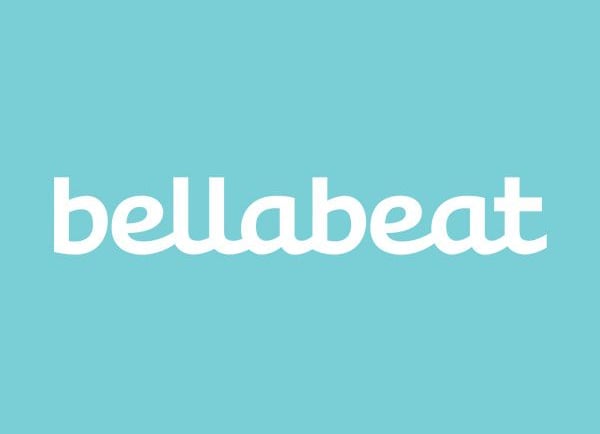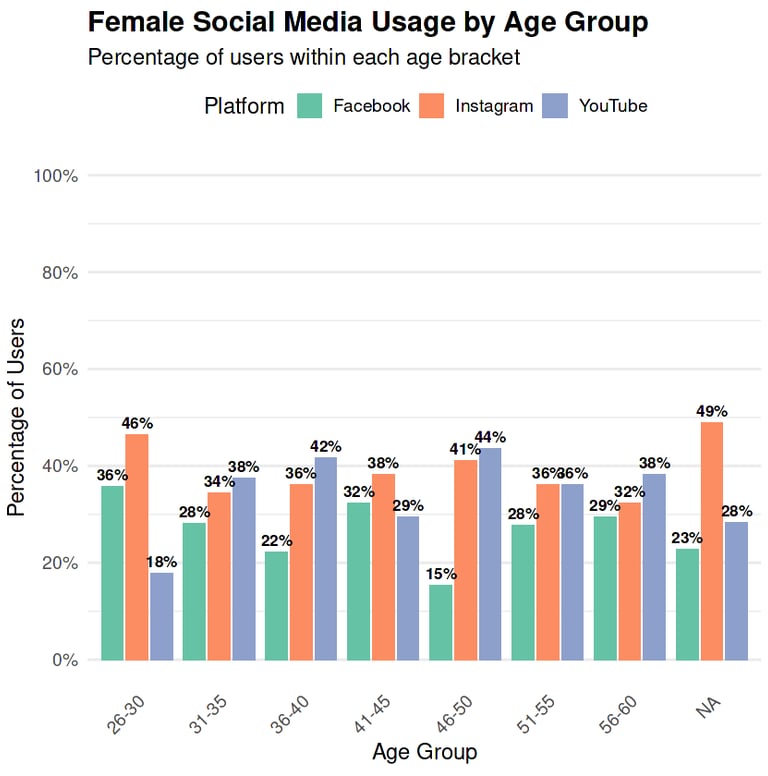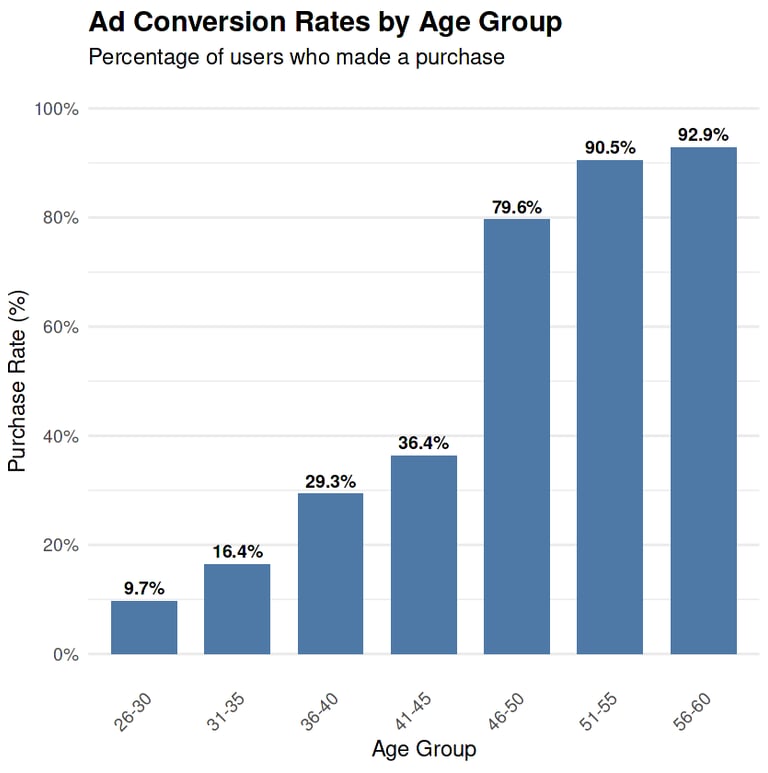Bellabeat: How a Wellness Brand Uses Smart Devices to Power Data-Driven Marketing
A deep dive into how Bellabeat leverages user data from smart wellness devices to inform strategic marketing decisions and personalize the customer journey (using R).
Andrew Yu (Capstone project)
6/1/20244 min read


Introduction
Bellabeat is a high-tech company that manufactures health-focused smart devices designed to empower individuals to take control of their well-being.
The goal of this project is to uncover user behavior insights from smart device data and provide actionable marketing recommendations for the executive team and key stakeholders. By analyzing trends related to physical activity, sleep, and user demographics, we aim to inform strategic decisions that drive engagement, improve user experience, and optimize advertising efforts.
Data Preparation
To begin, we install the required R packages that will support our analytical workflow.
Next, we load all the necessary data files needed for the analysis
Data Cleaning & Data Validation
Although the dataset is already 100% complete, it's good practice to perform a basic cleaning process to ensure data integrity and prepare for accurate analysis.
Starting the Analysis
We begin by organizing, filtering, and sorting the data to focus on the variables of interest.
In this case, we’re interested in exploring the relationship between physical activity and sleep duration.
Let’s compare these two variables visually to observe any patterns or trends.


From a recent meta-analysis published on PubMed: Prolonged sleep duration as a predictor of cognitive decline: A meta-analysis encompassing 49 cohort studies (by Qing Yang, Suya Li, Yang Yang, Xuechun Lin, Mengshu Yang, Chong Tian, Jing Mao), the study shows that sleep duration has a significant impact on next-day cognitive performance.
Based on our data and visualizations, we can clearly see a pattern:
People who engage in no physical activity tend to experience poorer sleep quality.
On the other hand, over-exercising can also negatively affect sleep.
This supports the idea that moderate, personalized activity levels which can be monitored using smart devices—may help individuals optimize their sleep quality.
Identifying Our Target Audience
Using the insights gathered so far, the next step is to identify potential target customer segments to improve marketing efficiency.
We’ll begin by analyzing which age groups experience the poorest sleep quality.


From this visualization, we can find that younger females tend to report the lowest sleep quality. This suggests that our primary target audience should be younger age groups.
Next, we analyze which social media platforms are most popular among our target demographics: Facebook, Instagram, and YouTube.


Since our target audience is younger individuals, and Instagram is the most popular platform among this age group, we should prioritize placing our advertisements on Instagram.
Lastly, we explore which age groups show the highest purchasing intent or buying rate, helping us refine our targeting strategy further.


From the graph we observe that buying power tends to increase with age. Since our focus is on a younger demographic, it's important to be mindful of our pricing strategy and carefully craft the messaging in our ads to resonate with their values and budget.
Conclusion & Next Steps
From a business perspective, I've identified that younger females tend to experience lower sleep quality, making them an ideal target audience. However, since younger age groups generally have less buying power, it is crucial to adopt a thoughtful pricing strategy and deliver our ad campaigns in a way that resonate with their lifestyles and values.
With this in mind, here are steps that we can take to maximize our marketing efficiency:
1. Prioritize Instagram Advertising Since Instagram is the most widely used platform among our target demographic, we’ll focus our marketing efforts there to maximize reach and engagement.
2. Refine Marketing Messaging for Younger Audiences Collaborate with the marketing team to craft messages that resonate with younger consumers — focusing on themes like self-improvement, convenience, affordability, and tech-savviness to build stronger emotional connections and brand relevance.
3. Adopt a Volume-Based Pricing Strategy Given the lower buying power of younger audiences, we’ll shift our approach toward selling more units at a lower price point, rather than focusing on high-margin individual sales.
Limitations of this analysis:
Lack of Gender Data in Ad Conversion Rates
The dataset used for analyzing ad conversion rates does not include gender information. As a result, the conclusions drawn may reflect combined trends across all genders, rather than being specific to the target audience of younger females.Synthetic Social Media Usage Data
The social media platform dataset was created for AI model training and practice purposes. While useful for exploratory analysis, it may not reflect actual usage patterns. For more accurate conclusions, we recommend sourcing real-world data from reputable research or analytics platforms.
Thanks for reading my Case Study! Hope this provided some useful insights and sparked new ideas for your own projects.
Reference:
FitBit Fitness Tracker Data,
Sleep Health and Lifestyle Dataset,
Average Time Spent By A User On Social Media,
Social Media Consumer Buying Behavior Dataset